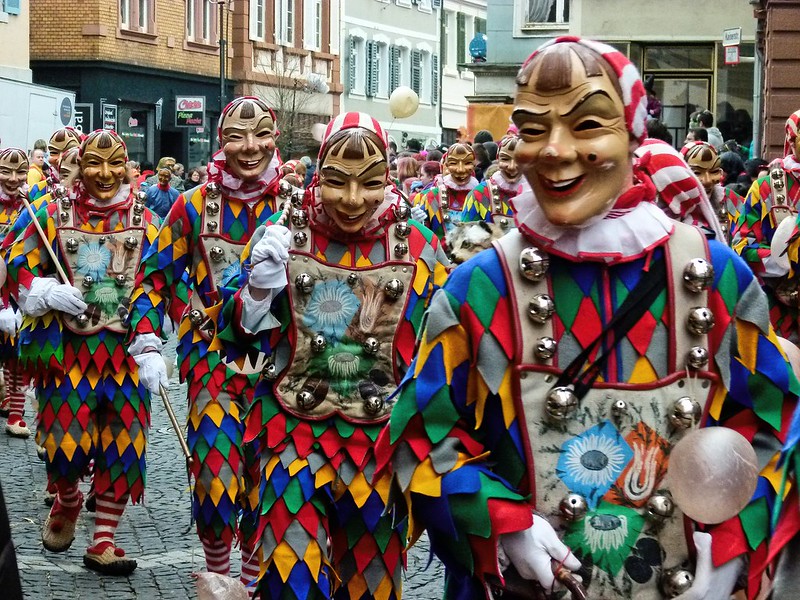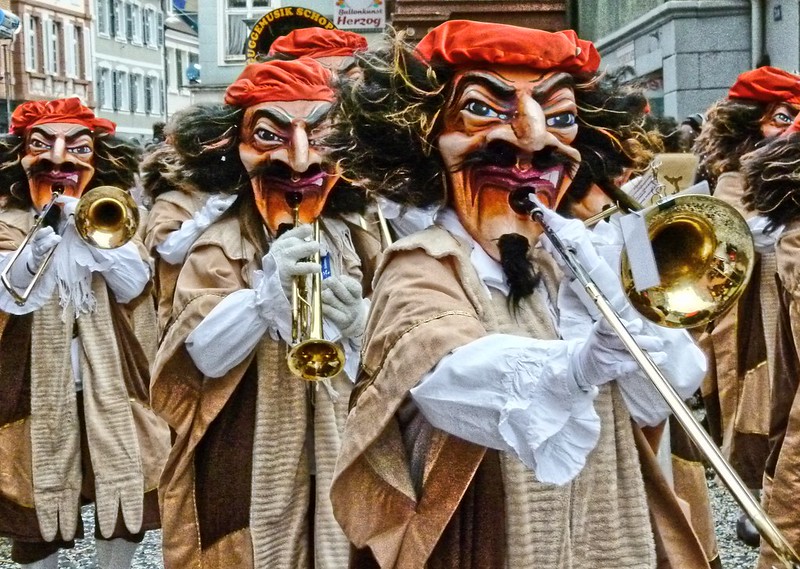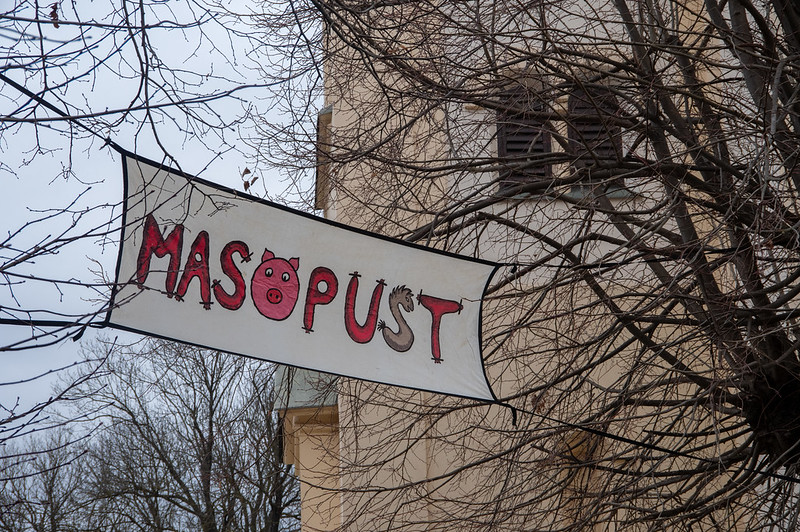Masopust
A Carnival of Masks, Laughter, and Meat, Registered as UNESCO Intangible Cultural Heritage
2026/02/13 - 2026/02/16
At the end of winter every year, villages and towns across the Czech Republic are filled with the lively parades, feasts, and laughter of Masopust. Especially notable are the traditional masked processions and door-to-door visits in the Hlinecko region of Eastern Bohemia, which were inscribed on the UNESCO Intangible Cultural Heritage list in 2010 and have become a symbol of Czech carnival culture. During the few days before Lent, residents don various costumes, parade through the streets, and enjoy music, dance, and hearty meat dishes in a festival that heralds the arrival of spring. For folklore enthusiasts, photographers, and travelers seeking the authentic local spirit, Masopust offers a special time to experience the simple joys and vitality of Czech life.
The sound of cowbells, the savory aroma of roasted pork and fried doughnuts, the crunch of snow underfoot, and the colorful sight of devils, bears, brides, and butchers dancing hand in hand... For several days, the ordinary is turned upside down as the entire village becomes a stage for laughter, music, and age-old rituals.
Main Attractions
UNESCO-Registered Masked Processions in the Hlinecko Region
The festival's highlight is the masked parade, where villagers dress in traditional masks and costumes representing bears, chimney sweeps, stilt walkers, mythical creatures, and more, going from house to house to perform songs, music, skits, and pranks. In the Hlinecko region, unmarried young men wear red masks, while married men wear black masks, parading through the village accompanied by a brass band. At each house, four men perform ritual dances to pray for a bountiful harvest and family prosperity.
Traditional Music and Dance
During the festival, folk bands play polkas and old Czech melodies, while masked dances take place in village squares and barns. The sounds of accordions, fiddles, and laughter fill the air, and impromptu conga lines often form.
Costumes and Decorations
Masopust costumes are incredibly creative and diverse! Hand-painted masks, patchwork outfits, straw dolls, and colorful ribbons abound. Common characters include bears (symbols of fertility), butchers, brides and grooms, and devils. Houses are decorated with garlands and animal bones, creating a rustic and wild atmosphere.
Cultural and Historical Background
Masopust dates back to the 13th century and combines the last feast before the Christian Lent (meat abstinence) with ancient pagan fertility rites and rituals to drive away winter. The name means "meat abstinence," and the festival served as a social release valve where villagers mocked authority, reversed roles, and strengthened bonds through laughter and food. The masked processions and door-to-door visits in the Hlinecko region were inscribed on the UNESCO Intangible Cultural Heritage list in 2010, symbolizing Czech Masopust culture.
In these traditional processions, village men and boys wear red or black masks and parade through the village with a brass band. At each house, four men perform ritual dances to pray for a bountiful harvest and family prosperity. The festival culminates in the symbolic "Killing of the Mare" ritual, featuring humorous testament readings and a resurrection dance, bringing the celebration to its peak.
This tradition was banned at times during the 18th and 19th centuries by the Catholic Church and in the 20th century under the socialist regime, but it played an important role in maintaining community cohesion and continues to be passed down from parents to children. Today, unique songs, dances, and masked parades are held across the country, preserving this "living Czech landscape" across generations.
Participant Voices
"I have loved dancing in the snow dressed as a bear since I was a child. Singing and laughing with the whole village is the essence of happiness!"
"I’m from Prague, but I participate in Masopust every year in a small village. The homemade food, music, and costumes make me feel like I’ve stepped into another world."
"Last year, I joined the parade as a devil. An old lady explained the meaning of the masks to me, and I felt the depth of tradition and warmth of the community."
Fun Facts
- Masopust is sometimes called the "Czech Mardi Gras" and is held on the weekend just before Ash Wednesday.
- The bear character is believed to bring fertility and good luck to the households it visits.
Festival Dates
- 2026: 2026/02/14 - 2026/02/17
- 2025: 2025/03/01 - 2025/03/04
- 2024: 2024/02/10 - 2024/02/13
- 2023: 2023/02/18 - 2023/02/21
- 2022: 2022/02/26 - 2022/03/01
- 2021: 2021/02/13 - 2021/02/16
- 2020: 2020/02/22 - 2020/02/25
- 2019: 2019/03/02 - 2019/03/05
Masopust is celebrated every February or March in villages and towns across the Czech Republic. For the most unforgettable experience, visit a rural community, don a mask, and join the parade—you’ll discover the heart of Czech tradition in every laugh, dance, and bite.
The event schedule is subject to change. Please check the official website for the most up-to-date information.
Information
| Name | Masopust |
| Country | Czech |
| Area | Hlinecko |
| Date | 2026/02/13 - 2026/02/16 |
| Link |
Upcoming Festivals
Dia de la Virgen de Guadalupe Mexico
A Festival Weaving Faith, Fervor, and Mexican Identity
2025/12/11L'Escalade Switzerland
Geneva’s Grand Winter Festival of Courage, Chocolate, and Community
2025/12/12Umkhosi Wokweshwama South Africa
The Zulu First Fruits Festival—A Sacred Celebration of Land, Ancestors, and Renewal
2025/12/12Lucia Festival (St. Lucia's Day) Sweden
A Festival of Light Illuminating the Nordic Darkness
2025/12/15Las Posadas Mexico
The Luminous Quest for Sacred Shelter
2025/12/22Noche de Rabanos (Night of the Radishes) Mexico
A celebration blending art, farming heritage, and cultural traditions
2025/12/23Chant of the Sybil on Majorca Spain
A Medieval Prophecy Echoes Through Majorcan Christmas
2025/12/23‘Hatajo de Negritos’ and the ‘Hatajo de Pallitas’ Peru
A Christmas Festival of Rhythm, Faith, and Afro-Andean Heritage in Peru’s Ica Region
2025/12/24Harbin International Ice and Snow Sculpture Festival China
A Frozen Wonderland Where Art and Adventure Merge
2025/12/24Takanakuy Peru
The Andean Festival of Reconciliation by Fist—How Confrontation Creates Year-End Peace and Bonds


